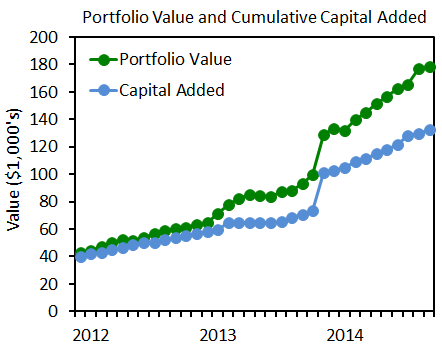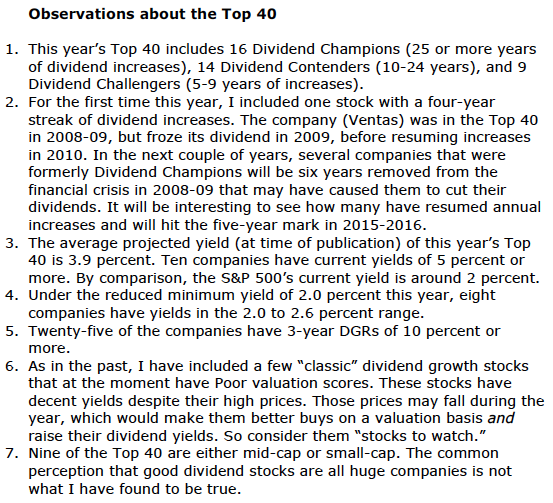Using Dividend Stocks for Retirement Planning
Post on: 15 Июнь, 2015 No Comment

Dividend Stocks and Roth IRAs
A solid dividend investing plan can be a great strategy for building long-term wealth with a goal of having a prosperous retirement. By using a smart dividend investing strategy, you can utilize the benefits of compounding interest to take a reasonable amount of initial capital, invest it in strong dividend equities, and allow share price appreciation and dividend payouts to build up to a substantial asset base in the future. As stated above, in a Roth IRA, this substantial asset base will then be free of taxes in the account.
Not only are your investments exempt from taxes within the account, but Roth IRAs mandate beneficial tax-free distributions for your future retirement plans. Since Roth IRAs have this specific tax advantage, the returns from dividend-paying stocks in the IRA do not only act as key assets to help build wealth for your retirement nest egg, when you are ready to withdrawal your distributions in your retirement years, that income is tax-free [see also The Unofficial Dividend.com Guide To Being An Investor ].
The tax advantage from investment returns in the IRA coupled with the future tax-free distributions result in a Roth IRA being a potential solid plan to build up income for a peaceful retirement. Though Roth IRAs have the disadvantage of mandating that contributions come from taxable, earned income, in the end the long-term benefits should outweigh the short-term costs.
In short, Roth IRAs are retirement savings accounts. You contribute money into the account and let it grow over time with various investments that you can eventually withdrawal when you are ready to retire. However, things are never that simple. Below we outline some more details of Roth IRAs.
Roth IRA Contributions
20Wall%20Street.jpg /%
Contributions can be made into the account with after-tax income throughout the year and that money is used to invest in a wide variety of vehicles. However, there are limits to what kind of money you can contribute and how much. For instance, you can only contribute income earned through work into a Roth IRA, so only those who work for a living can contribute to the account. Furthermore, the IRS changes the amount an individual can contribute every so often, so staying up to date on the limits is necessary to getting the most out of your Roth IRA [see also How IRAs Offer More Flexibility Than 401(k)s ].
Not only do IRAs have contribution limits, they also have income phaseouts. What this means is that once you reach a certain level of income, the amount you are able to contribute to your account goes down. At a certain income level, contributions get phased out entirely or the tax deduction for a contribution disappears.
Note that the contribution limits based on your income bracket change in some years. Be sure to always keep an eye on any new tax laws or developments on how Roth IRAs are treated and how contribution limits are changed over time.
Roth IRA Investments
When it comes to growing your retirement funds, the Roth IRA allows for a wide variety of investment vehicles to be utilized within the account. Typically, investors will utilize securities such as stocks, ETFs and mutual funds to help grow their funds, but investments like CDs, bonds, derivatives and even real estate can also be used.
A large advantage that Roth IRAs have over other savings options is that the investments within the account do not incur any taxes on asset appreciation, like capital gains or dividends. As such, investors can and should utilize dividend stocks to help build up their retirement nest egg. Not only have dividend stocks outperformed non-dividend-paying stocks historically, but investing in dividend stocks can allow you to take advantage of compound interest to increase your retirement investments substantially. For more on compounding interesting, take a look at The Pros and Cons of Compound Interest .
Roth IRA Distributions
Another benefit that Roth IRAs have is that when it comes time to withdrawal funds from the account, those distributions are tax free. Now, not everyone can automatically withdraw money from the account tax-free, there are some stipulations on when you can finally withdraw this money; for one, you must be over the age of 59.5, and secondly, you must have established your Roth IRA for at least five years.
There are exceptions to these distribution rules. If you are disabled or you are using the money to purchase your first home, then you can withdraw the Roth IRA funds with no penalty. In most other cases, you will then be hit with a 10% penalty plus fees and taxes if you feel the need to withdraw money from your Roth IRA outside of the allowed timeline. It is highly recommended to never prematurely withdraw money from your Roth IRA unless its a dire emergency [see also 7 Retirement-Planning Musts for Young Investors ].
Traditional or Roth IRA?

20Cash%202.jpg /%
Now that you have some understanding of the basics of Roth IRAs, you may wonder whether you should open a Traditional or Roth IRA. You do not necessarily have to choose between the two; you have the option of opening both if you desire. At some point down the road you can always convert your account to the other if you feel that one IRA suits you better, but be warned, you may have to incur a penalty if this is the road you ultimately choose.
To determine what retirement account path to take when you are at the crossroads of choosing between the two, you must have a firm grasp of their different tax guidelines and other nuances:
- Contribution Taxes: In a Traditional IRA, contributions are made with after-tax income, and the contributions are tax deductible. Roth IRA contributions, on the other hand, are made with after-tax income that is not tax deductible.
- Withdrawal Taxes: When it comes to withdrawals, Roth IRAs have the upper hand because they are not taxed. Traditional IRA withdrawals are taxed as normal income.
- Distribution Guidelines: As stated above, in a Roth IRA, you cannot withdraw money penalty-free until after the age of 59.5 and if the account has been open for at least five years. When it comes to a Traditional IRA, you cannot withdraw penalty-free until 59.5 as well; however, you must begin to withdraw prior to age 70.5. After that age, a 50% penalty is incurred.
- Income Eligibility: With a Traditional IRA, there is no limit on contributions based on your income, however Roths have some restrictions when it comes to annual income; once you make over a certain amount of money each year contributions to Roth IRAs become limited.
- Contribution Deadline: For both accounts, contributions for the previous year can be made up until April 15th of each year.
For a more detailed comparison of Traditional and Roth IRAs, check out Dividend.com’s IRA Guide and Roth IRAs vs. Traditional IRAs .
A general rule is if you expect to be taxed at a higher rate than your current income tax rate, then think about opening a Roth IRA. However, if you think the opposite is true and that you currently have a higher tax rate than you will in retirement, opening a Traditional IRA may be the best option.
Resources for Roth IRA Education
- RothIRA.com : This site is wholly dedicated to Roth IRAs and educating investors about every facet of these accounts.
- IRS : The IRS has a section of their site dedicated to Roth IRAs including information on contribution limits for each year.
- Dividend.com Retirement Center : Our retirement center offers analysis and insights on how to make the most of your retirement accounts.














